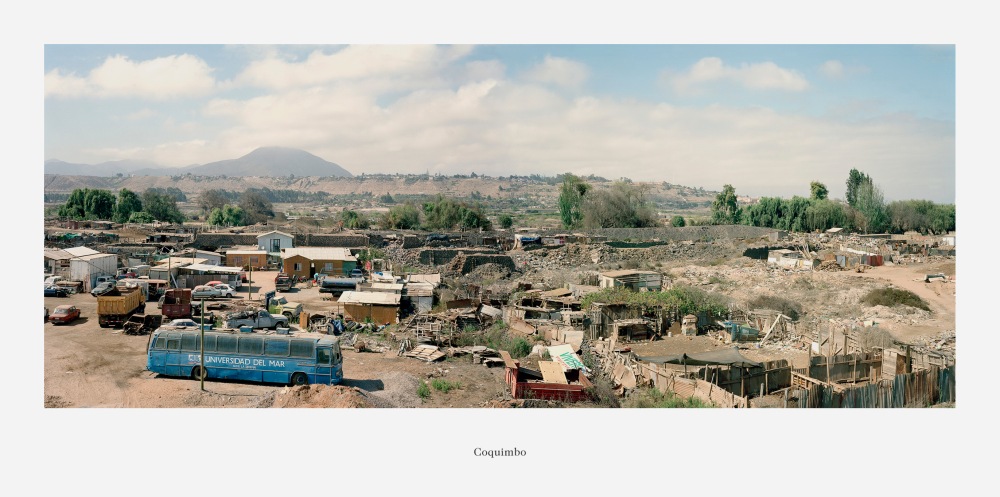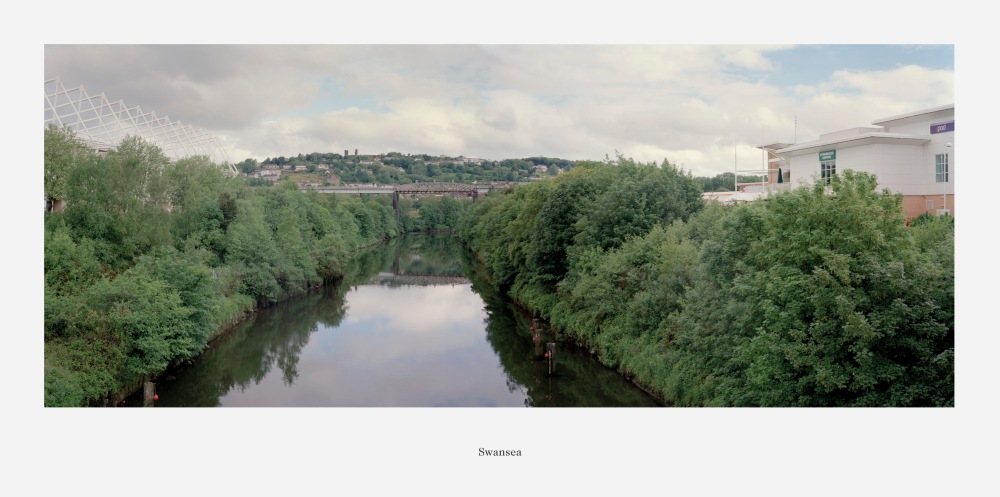by Cameron Procter
Separated by almost 7000 miles, the Chilean province of Coquimbo and the Welsh Swansea Valley are not immediately recognized as having any associations with one another. Yet, from 1840 to 1880, these two regions were directly connected by the transatlantic metal trade – copper ore extracted from Coquimbo’s mines was shipped across to Swansea, where it would be smelted and manufactured. Ignacio Acosta, LOOK/15’s artist-in-residence, illustrated this historical relationship in his 2014 work Coquimbo & Swansea, exploring the decaying traces of copper left behind by the mining industry.
The two photographs: one overlooking the former site of copper smelting in the Chilean desert, and the other looking across the River Tawe in the lower Swansea Valley, an area considered to have been one of the most heavily industrialised in the world. These post-industrial landscapes, each made by conjoining two 5×4 large format photographs, distinctly contrast with one another: In Coquimbo, we now see a makeshift settlement. Across the Atlantic, thanks to the decontamination procedures of the Lower Swansea Valley Project in the 1960s and 70s, greenery now lines the banks of the Tawe and retail parks stand on ground that once supported factories.


Ignacio Acosta will be discussing Coquimbo &Swansea and other works at his talk at the Bluecoat on May 17th. To see more of his work, you can view his website here.
All images are by Ignacio Acosta, 1976, © Ignacio Acosta